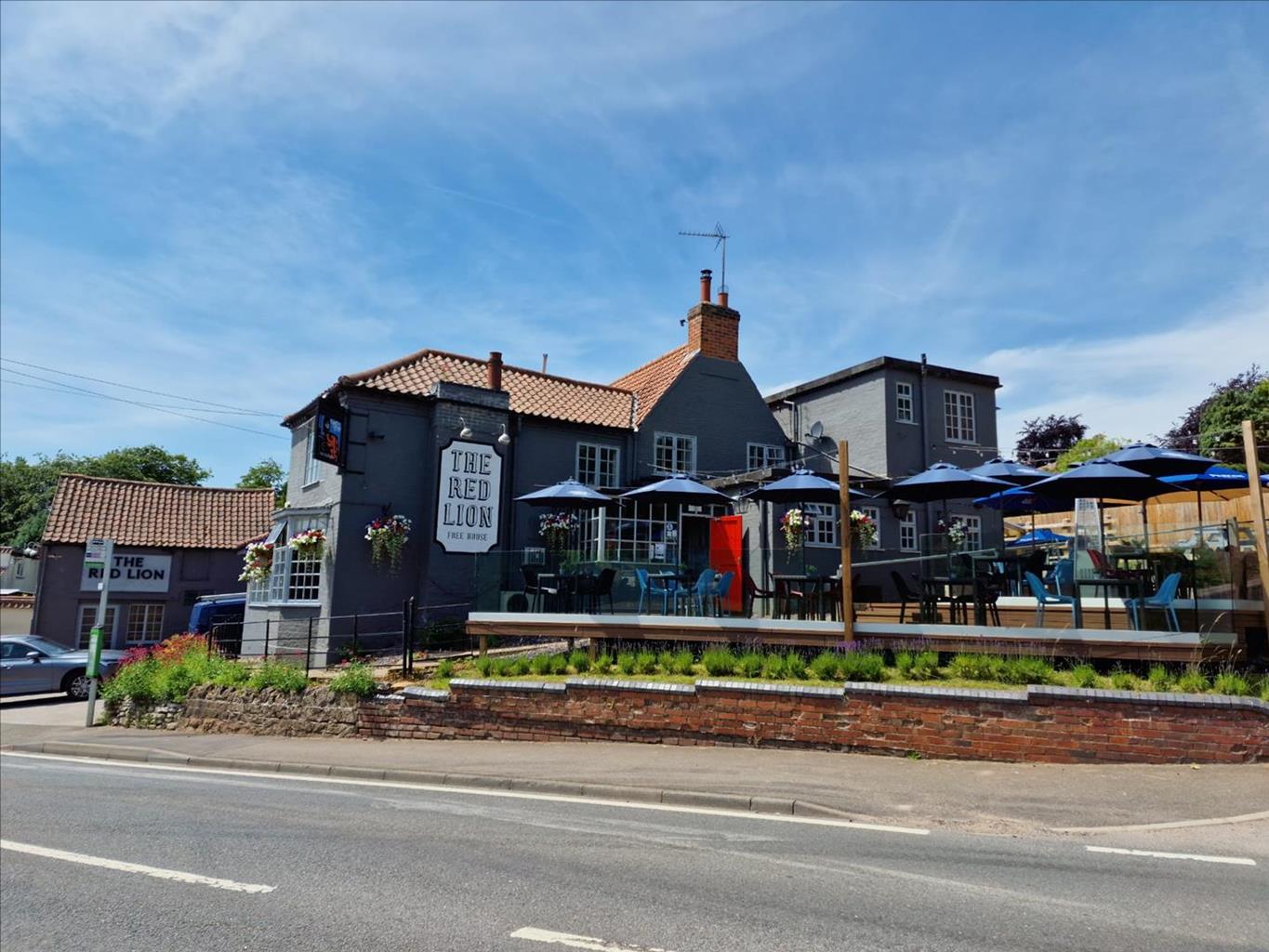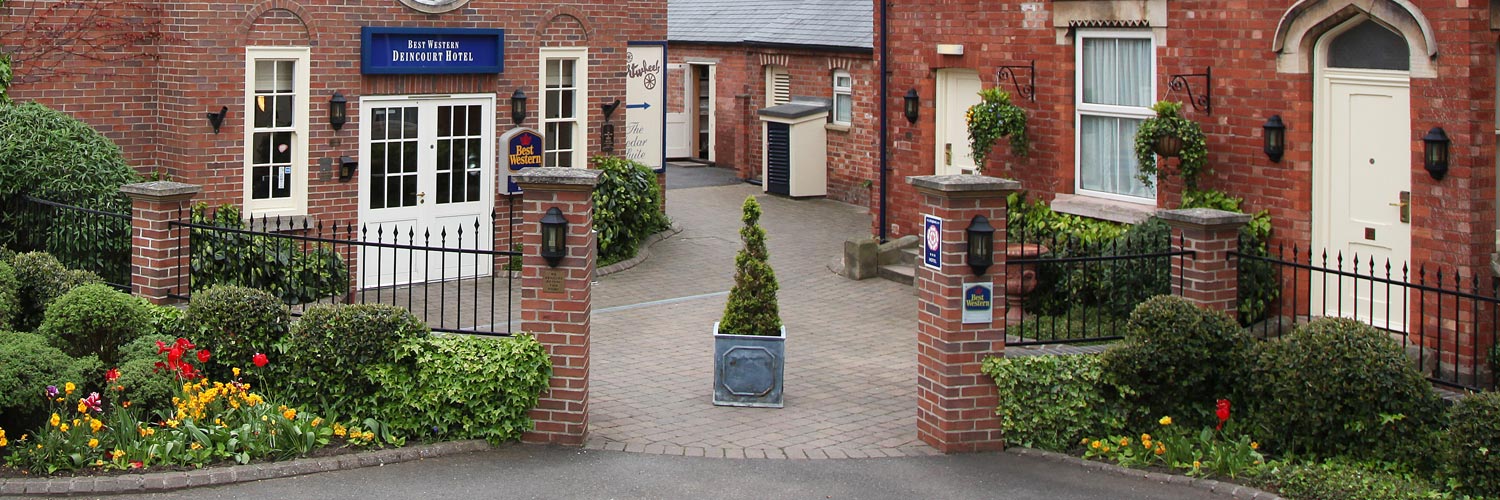New Hall Farm is ideally suited for the discerning adult visitor. Sited on the most attractive…
Around Southwell

An exploration of historic Southwell, from loft towers to famous apples.
4.25 miles (6.8kms)
About the walk
The small Nottinghamshire market town of Southwell is dominated by its 12th-century minster, which was technically elevated to the status of a cathedral when the new Diocese of Southwell was created in 1884. Make sure you set aside some time to explore this spacious and splendid building, which has a fine example of a Norman nave, plus a chapter house containing intricate 13th-century carvings of leaves, which were supposedly modelled on trees from the old Sherwood Forest. Outside are the ruins of an earlier archbishops’ palace, while the two distinctive conical towers make the minster a recognisable landmark from several points on the walk. The tempting Minster Refectory and shop are also well placed to round off your visit.
Halfway around the walk, amid the rows of soft fruit and orchards, you’ll notice a rather grand-looking house over to your left and a small fishing lake to your right. This is all part of Norwood Park, the last surviving of four elegant parks created around Southwell for the Archbishop of York, since Southwell was originally one of three collegiate churches in the huge York Diocese (the others were Beverley and Ripon).
An apple a day…
Another of Southwell’s claims to fame involves the humble apple. According to the well-told story, in 1809 a local girl called Mary Ann Brailsford planted some apple pips in her garden on Church Street, one of which grew particularly vigorously. After the cottage was sold to Matthew Bramley around 1850 a local nurseryman named Henry Merryweather noticed the thriving tree and asked if he could take a cutting. Bramley agreed, but said that if the fruit should prove commercially successful it must bear his name. Of course, the propagation was a success and the classic English cooking apple has never looked back. It’s remembered locally in the Southwell Galette, a delectable pastry confection of sultanas, hazelnuts and Bramley apples.
Such is the appeal of this enduring and popular English cooking apple, that along some of the route of the walk you will see waymarkers for the Bramley Apple Trail and there’s even an annual festival celebrating the humble fruit when all manner of food, drinks and other apple-related products are promoted.
The last days of a king
As you walk through the centre of Southwell at the beginning of the walk you pass a 16th-century inn originally called the King’s Head. Here Charles I spent his last hours of freedom before surrendering to the Scottish army, which was based at Newark Castle. The inn’s name was changed to the Saracen's Head when Charles was beheaded.
Walk directions
From the car park, facing the minster, turn right on to Church Street and walk up to the junction at the top in the town centre. Turn right opposite the Saracen’s Head, then cross the road and turn left into Queen Street. Follow this for 350yds (320m), then turn left on to a short drive, opposite a road called Ropewalk.
At the end continue uphill on an alleyway by a school, and at the far corner turn right along the top of the playing field. At a junction of paths go forwards, down a few steps, and straight on along a path behind back gardens, keeping in the same direction. Ignore all turnings off left and right until eventually you cross a road.
Continue on a field-edge path (not the driveway next to it) on the far side. Where this approaches a road bend turn sharply right for a short path across the field. Cross the road at the far side and go through a gap in the hedge to pick up a broad track past a fruit farm. Continue ahead until you reach an open junction of paved lanes.
Keep straight ahead, signposted 'public footpath', past the golf course on your right, then clubhouse and driving range on the left. At the road at the end turn right, then turn left on to a Maythorne Lane. After a couple of bends the lane is crossed by the former Mansfield–Southwell railway line, now the Southwell Trail.
For a direct return to Southwell turn right here; otherwise continue to the far end of the lane and go through the former Maythorne Mill in order to turn left, across the bridge and through the gate, and then veer right at a choice of paths. Go over a short footbridge and stile, and turn right for a riverside path along the River Greet for just over a mile (1.6km).
At another converted mill building turn right on to Station Road and walk up past the Southwell Trail car park and The Final Whistle pub to the crossroads. Go over this and up the tree-lined Burgage Green to the war memorial. Take the side road half left, and at the end turn left on to Burgage Lane. Just before Hill House turn right on to a narrow alleyway called Becher’s Walk down to Church Street. Turn right for the minster and car park.
Additional information
Easy tracks and field paths, riverside path, several stiles
Small town surrounded by fields and orchards
Generally good, but on lead in town centre
OS Explorers 270 Sherwood Forest; 271 Newark-on-Trent
Car park opposite minster on Church Street (free for first two hours)
By car park
WALKING IN SAFETY
Read our tips to look after yourself and the environment when following this walk.
Find out more
Also in the area
About the area
Discover Nottinghamshire
Most people associate Nottinghamshire in the East Midlands with the legend of Robin Hood, though the former royal hunting ground of Sherwood Forest has been somewhat tamed since Robin’s outlaw days. Traditionally, the county’s primary industry, alongside agriculture, was coal mining but it is also an oil producing area, and during World War II produced the only oil out of reach of the German U-Boats.
The county is divided between the old coalfields north of the city of Nottingham, the commuter belt of the Wolds to the south, Sherwood Forest and the great country estates known as the ‘Dukeries’. Towns of note are the river port and market town of Newark, which hosts major antiques fairs six times a year, and Southwell, known for the medieval minster with exquisite carvings of Sherwood Forest.
D H Lawrence was a Nottinghamshire man, born in Eastwood, the son of a miner and former schoolteacher. He grew up in poverty, and his book Sons and Lovers reflects the experiences of his early years. Other Nottinghamshire notables include Thomas Cranmer, the first Protestant Archbishop; Jesse Boot, founder of the Boots pharmaceutical company; Henry Ireton, the man who singed Charles I’s death warrant; and Olympic skaters Torvill and Dean.
Nearby stays
Restaurants and Pubs
Nearby experiences
Recommended things to do
Why choose Rated Trips?
Your trusted guide to rated places across the UK
The best coverage
Discover more than 15,000 professionally rated places to stay, eat and visit from across the UK and Ireland.
Quality assured
Choose a place to stay safe in the knowledge that it has been expertly assessed by trained assessors.
Plan your next trip
Search by location or the type of place you're visiting to find your next ideal holiday experience.
Travel inspiration
Read our articles, city guides and recommended things to do for inspiration. We're here to help you explore the UK.













